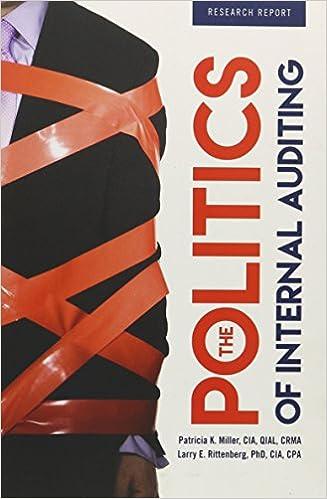Answered step by step
Verified Expert Solution
Question
1 Approved Answer
I. The Rau Co. closes its books once a year on Dec. 31. Required: (a) Make the necessary Dec. 31, 2000, adjusting entry for each


I. The Rau Co. closes its books once a year on Dec. 31. Required: (a) Make the necessary Dec. 31, 2000, adjusting entry for each of the following: (1) On Aug. 1, 2000, Rau received $2,800 in advance for seven months of consulting work. An income statement account was credited on Aug. 1st (2) On March 1, 2000, Rau paid $7,200 in advance for one year's rent. A balance sheet account was debited on March 1 st (3) On Nov. 1, 2000, Rau hired an advertising agency to do three months of advertising work for $4,500. This amount will be paid on Jan. 31, 2001, when the work is completed. (4) On Feb. 1, 1999, Rau received cash in advance for a three-year, 36-copy subscription to a magazine that Rau publishes. The subscription began with the February, 1999, issue. "Unearned Subscriptions Revenue currently has $900 in it. (5) On April 1, 2000, Rau borrowed $10,000 from its bank by signing a three-year, 12% note. Interest is paid on the note semiannually on April 1st and Oct. 1st of each year. (6) On July 1, 1995, Rau acquired a machine for $45,000. The machine has an estimated life of 10 years, an estimated residual value of $3,000, and straight-line depreciation is being used. (b) Indicate which of the above entries may properly be reversed. 4 I. The Nixon Advertising Agency had the following 2000 selected transactions: Feb. 1: Nixon ordered equipment that was expected to cost $31,500. May 1: Nixon borrowed $30,000 from its bank by signing a one-year, 10% note payable. All of the interest will be paid on May 1, 2001, when the principal comes due. June 1: The equipment ordered on Feb. 1st arrived at a cost of $33,000, which was paid in cash. This equipment had an estimated life of five years with an estimated residual value of $3,000. Nixon will use straight-line depreciation to depreciate this equipment. June 12: Nixon billed a customer $6,600 for advertising work that was completed. The terms of this billing was 2/10; net 30. June 20: The customer, who was billed on June 12th, paid Nixon his bill in full. Aug. 1: Nixon paid a consulting firm $9,000 in advance to do six months of consulting work from Aug. 1, 2000, to Jan. 31, 2001. Nixon debited an income statement account on Aug. 1st Oct. 1: Nixon paid his landlord $36,000 in advance for five months of rent, running from Oct. 1, 2000, to Feb. 28, 2001. Nixon debited a balance sheet account on Oct. 1st Nov. 1: Nixon was hired to manage a five-month advertising campaign beginning on Nov. 1, 2000, and ending on March 31, 2001. The customer will pay Nixon the $800 per month fee on March 31, 2001. Required: (a) Neatly and in general journal form, record the above transactions or events. (b) Make the necessary Dec. 31, 2000, adjusting entries for (1) the May 1, 2000, note; (2) the June 1, 2000, equipment; (3) the Aug. 1, 2000, consulting agreement; (4) the Oct. 1, 2000, rent payment; and (5) the Nov. 1, 2000, advertising campaign. (c) Make Jan. 1, 2001, reversing entries for those Dec. 31, 2000, adjusting entries that may be reversed. (d) Make the March 31, 2001, entry related to the Nov. 1st transaction described above, assuming reversing entries were made on Jan. 1, 2001. (e) Make the May 1, 2001, entry to record the payment of the $30,000, 10% note plus any interest, assuming reversing entries were not made on Jan. 1, 2001. 5
Step by Step Solution
There are 3 Steps involved in it
Step: 1

Get Instant Access to Expert-Tailored Solutions
See step-by-step solutions with expert insights and AI powered tools for academic success
Step: 2

Step: 3

Ace Your Homework with AI
Get the answers you need in no time with our AI-driven, step-by-step assistance
Get Started


